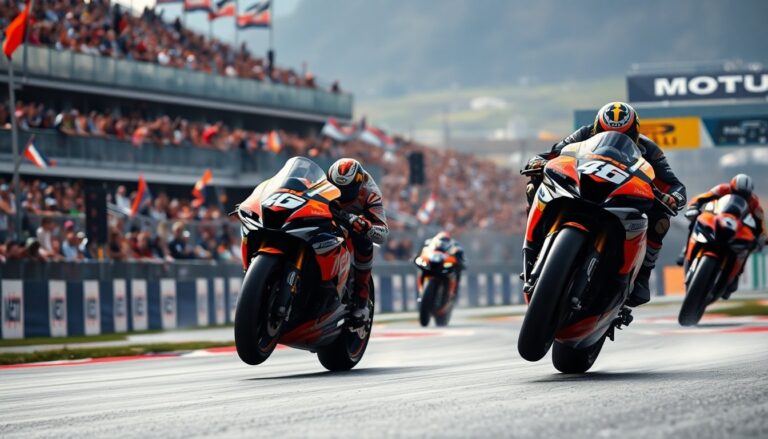Argomenti trattati
The world of MotoGP offers a captivating experience that attracts millions of fans worldwide. With high-speed motorcycles, skilled riders, and complex racing strategies, MotoGP stands as the pinnacle of motorcycle racing. This article explores the essence of MotoGP, examining its history, the technology behind the bikes, and the intense competition that characterizes each season.
A brief history of MotoGP
MotoGP, officially known as the FIM Road Racing World Championship, started in 1949 and has grown into one of the most prestigious motorsport events. Initially, the championship featured various motorcycle classes, but since 2002, it has concentrated on three main categories: MotoGP, Moto2, and Moto3. The primary class, MotoGP, showcases the most powerful bikes, with machines capable of exceeding speeds of 350 km/h.
The evolution of the sport
MotoGP has undergone significant transformations over the decades, particularly regarding regulations and technology. The introduction of four-stroke engines in the early 2000s marked a pivotal moment. This change led to notable advancements in engine performance and fuel efficiency. These developments not only reshaped racing dynamics but also attracted a new generation of fans fascinated by technological innovations.
The technology behind the bikes
A captivating aspect of MotoGP is the advanced technology incorporated into the motorcycles. Each factory team engineers its bike, ensuring compliance with stringent technical regulations while striving to maximize performance. Modern MotoGP bikes feature a lightweight chassis, advanced aerodynamics, and state-of-the-art electronic systems that improve handling and control.
Key components of a MotoGP bike
The engine serves as the core of any racing motorcycle. In MotoGP, these engines are typically 1,000cc four-stroke, engineered to maximize horsepower while keeping weight to a minimum. The integration of materials such as carbon fiber not only reduces the overall weight of the bike but also enhances its structural integrity. Moreover, the suspension systems are meticulously designed to absorb shocks from uneven surfaces, thereby improving traction and stability at high speeds.
The competitive landscape
MotoGP transcends the machines; it is equally about the riders who navigate them. Each season, the championship showcases top talents from across the globe, all vying for the prestigious title of World Champion. The competition remains intense, with riders contending for prime positions on the grid and crucial points in the championship standings.
The role of teams and sponsors
Each successful rider is supported by a dedicated team of engineers, mechanics, and strategists committed to optimizing bike performance. Teams such as Yamaha, Ducati, and Honda have become leaders in the sport, investing millions in research and development. Sponsorship is vital in MotoGP, providing the financial resources necessary for teams to compete at the highest level. Major brands take advantage of MotoGP’s visibility to enhance their marketing efforts and brand recognition.
The future of MotoGP
Looking ahead, the future of MotoGP is promising. The championship is actively exploring sustainable practices, including the adoption of synthetic fuels and electric motorcycles. This transition seeks to minimize the sport’s environmental impact and attract a wider audience that values sustainability.
The introduction of new circuits and races in various global locations aims to enhance the fan experience and broaden the MotoGP fan base. Engaging younger audiences through digital platforms and social media is also vital for the sport’s growth.
MotoGP represents more than just a race; it combines technology, competition, and passion that continuously evolves. As we watch the exhilarating battles on the tracks, it is important to recognize the rich history and innovative spirit that propel this motorsport forward.

